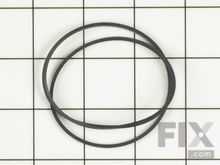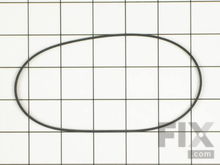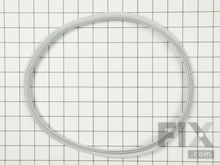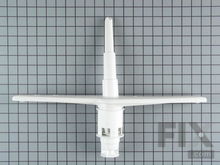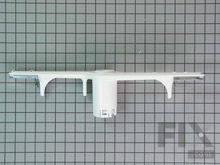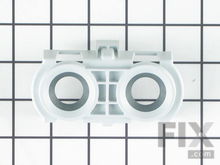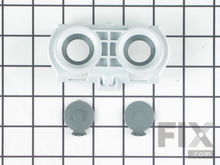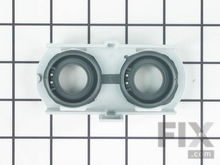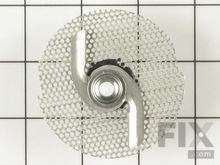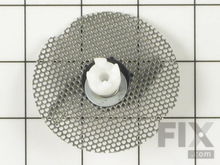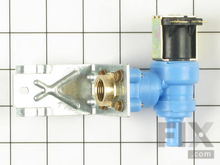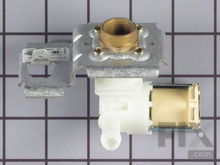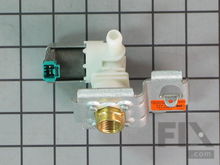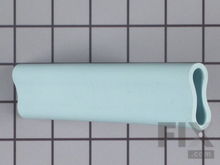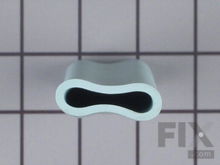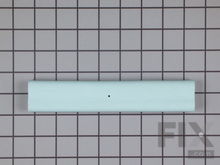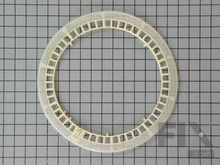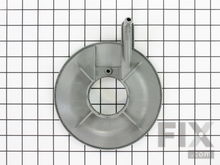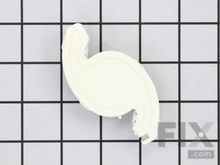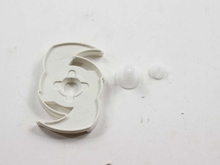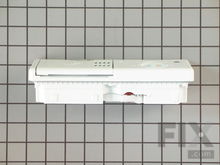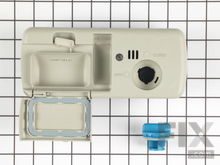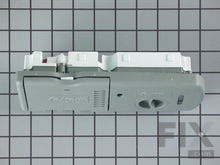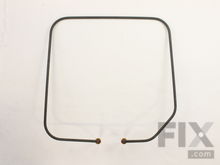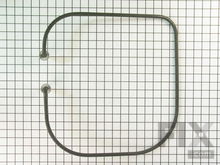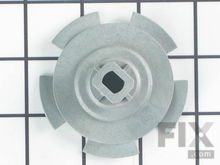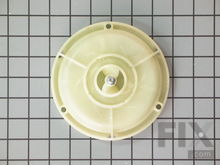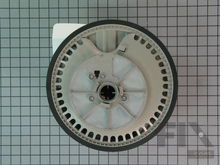How To Fix A Dishwasher That's Not Cleaning Dishes
- Rated as EASY
- 2543 repair stories
- 11 step by step video
Upper Discharge Housing Gasket
If the dishes aren’t getting washed nor rinsed well enough, low water pressure in the spray arms could be to blame. You will want to check the upper discharge housing gasket. Just above the circulation impeller in the bottom of the dishwasher tub is the circular discharge housing, with its gasket around it. Make sure the gasket is fitted tightly with no debris stuck around it. Or if it is broken, clean the area and insert a new gasket taking care not to twist it.
Spray Arm
Whether your dishwasher has one spray arm at the bottom or also features a second one in the middle or at the top, the water from the spray arm is meant to spray water and detergent forcefully over the dishes. If the spray arm is made of plastic, it can become warped or cracked. If it is a metal spray arm, it can pull open at the seams or get bent. Some of the holes in either type of spray arm can get blocked. First, make sure the spray arms are able to move evenly and freely on their bearing rings and mounting brackets. Then remove your spray arms and check to ensure they’re straight and uncracked. Check the holes and clean them if they are clogged. Cleaning out the holes can be a tedious task, so consider just replacing clogged spray arms. Clogged holes are a hint to check to see if there is a problem with the filter system that resulted in debris coming into the arms in the first place.
Docking Station
Dirty dishes coming back out of the dishwasher could be due to a failure of the center spray arm, attached to the top rack on some dishwashers. This arm gets its water from a docking station with flappers and two outlets, on the water supply tube at the back of the dishwasher. It should connect up with the spray arm on the underside of the upper rack when you slide that rack all the way in. First, check that the docking station’s tightly attached to the water supply tube. Then move the flappers to make sure they open and close easily. Replace if the flappers are not flexible or if any plastic parts are cracked.
Chopper
The bits of food on your dishes are supposed to get chopped up by the food chopper, or macerator, so that they fit down the drain. Otherwise, the drain can get clogged and the food bits can go through the spray arms and get stuck there or on your dishes again. If dishes are left dirty at the end of the dishwasher cycle, take a look at the pump drain to see if food bits are stuck there. If so, your food chopper could be malfunctioning.
Water Inlet Valve
A lot of the time, a dishwasher that isn’t doing its job is one that has a broken water inlet valve. This valve, usually found in the front part of the dishwasher behind the bottom access panel, ensures that the tub gets enough water during the fill part of the cycle. Interrupt the dishwasher to check that the water level reaches the bottom of the heater when it ought to be done filling. If not, drain and unplug the dishwasher. Make sure the water can come into the valve from the water main with no obstructions. Use a multi-meter to check whether the valve has the electrical continuity to open, or if it needs replacement.
Water Delivery Tube
Dishwashers that have an upper spray arm, or an upper and middle spray arm, should have their water delivery tube checked when they aren’t washing dishes correctly. Sometimes called a wash arm manifold, this plastic tube should be aligned with the spray arms to bring water from the pump to the arms. Check for blockage in the tube. If it has a filter, check for debris that may be blocking water there.
Filters
The food bits that get washed off your dishes in a dishwasher are supposed to be removed out of the wash water by a filter. This could be located in the part of the pump that circulates water, or it could be in the wash arm manifold. While the filters are meant to clean themselves, hard water or inappropriate detergent usage could have clogged them. Clean your filter(s) if needed. Replace them if they are torn or worn out. And after working on your filters, make sure that dirty wash water didn’t clog up the spray arm holes as well.
Wash Spinner
Some dishwashers have a smaller wash arm at the top of the machine tub called a third level wash spinner. If your dishwasher has one, make sure it is fitted tightly, it’s not cracked, and it can spin without knocking into anything.
Detergent Dispenser
Both the detergent and the dispenser have an impact on how clean your dishes are getting. Try switching to a better detergent or to a powdered one if you’ve been using tablets or gel. Try putting some detergent into the prewash section, if one’s provided on your model. And if your area has hard water, use a little more detergent. Check the dispenser, on the inside of the dishwasher door on most models, to ensure it is clean and the hinge is unimpeded to open during the washing portion of the cycle.
Heating Element
Your dishwasher is meant to bring in hot water for washing, and the heating element is only needed to keep that water hot, or to get it even hotter for a heavy-duty cleaning cycle. So ascertain that the water heater in your house is delivering water at about 140 degrees to the dishwasher. If the water is any cooler, the dishes may not get clean. If it is much hotter, the dishes might get damaged. Try running the hot water tap in the kitchen sink for a minute or two before you turn the dishwasher on. If you’ve set the dishwasher to provide a hot wash cycle but the water temperature drops as the machine runs, you may need to check the heating element at the bottom of the dishwasher with your multi-meter.
Pump Impellers
Most dishwashers are designed with an impeller to circulate the water and send it through the spray arms, and a separate drain impellor in the pump to get rid of the water at the end. The impellors can be replaced if damage has happened to either the hub or the fins.
More Repair Parts
Still not sure which part is broken? We can offer you custom troubleshooting help if you search with your model number.





